5 Tips For Finding Nudibranchs At The Tide Pools
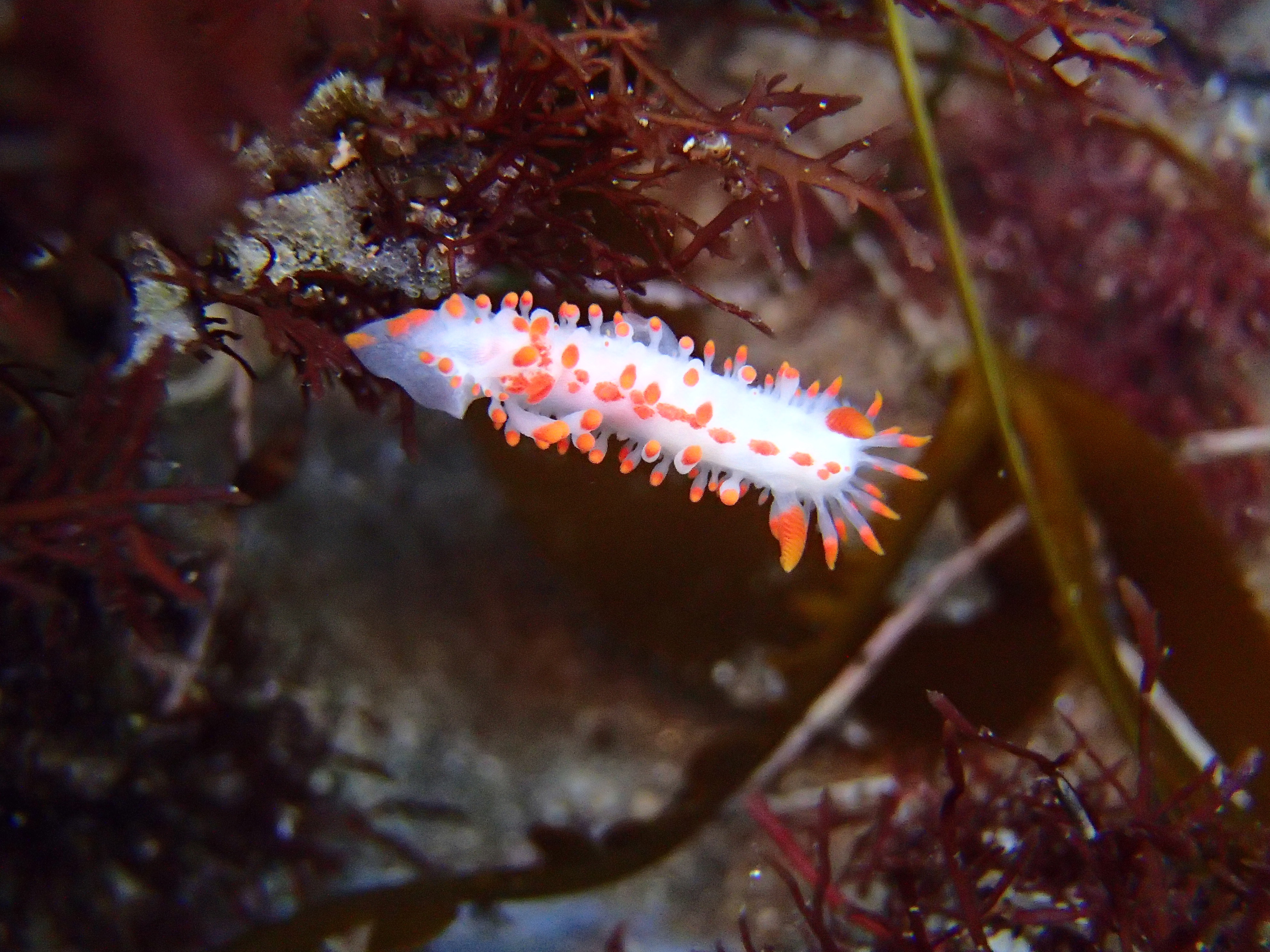
For many avid tide poolers, nudibranchs are one of the coolest animals to find at the tide pools. These sea slugs are often brightly colored, possess cool abilities, and move slowly enough that you can get good pictures!
Unfortunately, finding these creatures can be difficult. Nudibranchs in the tide pools are typically very small, ranging from only several millimeters to an inch long, and their bright colors don’t make them stand out as much as you would think.
Nudibranchs still elude me sometimes when tide pooling, but here are some tips that have helped me in my search for these fascinating creatures. Once you’ve got the hang of these tips, check out this article to put your spotting skills to the test.
1. Wait for Low Tides
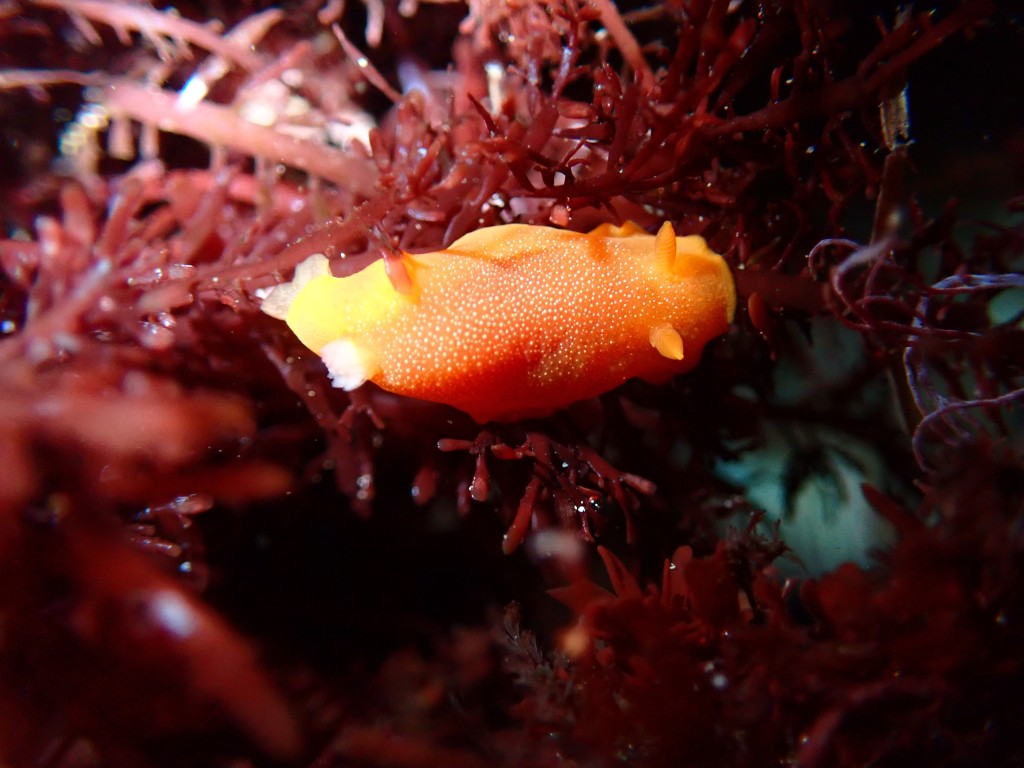
Nudibranchs are low intertidal animals, meaning they are most often found in rock pools only exposed at low tide. This is because nudibranchs don’t like to be out of the water for any lengthy period of time. Unlike crabs that can breathe in the air by keeping their gills moist or other mollusks that have hard shells to hide inside when the hot sun comes out, nudibranchs don’t have protection from drying out in the air.
Most nudibranchs are found in pools that never dry up, typically in the low intertidal zone. The best tides for finding nudibranchs are negative tides when these pools are exposed to the air. So if you’re looking to find nudibranchs, best to wait for the lowest tides to go searching.
2. Know What to Look For
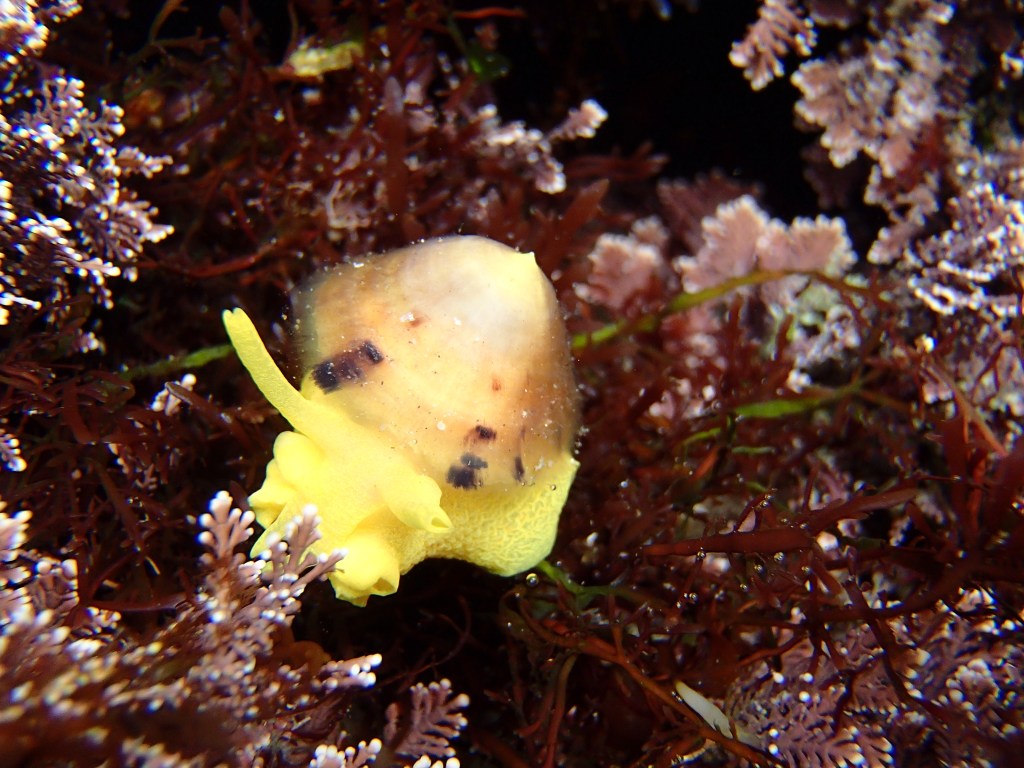
As we discussed above, nudibranchs are small and move very slowly, so it can be difficult to spot them in the tide pools. One of the best ways to train your eyes to see these marine slugs is to find out what species you are likely to see. Go on iNaturalist and search for nudibranchs at the tide pools you are planning to visit and see what other people have seen. Familiarizing yourself with the patterns and colors of the nudibranchs you are looking for will make then much easier to spot among the sea grass, rocks, algae, and other tide pool creatures.
One night while scrolling through iNat, I saw an observation of a yellow umbrella slug, a species I didn’t know existed. While not technically a nudibranch, umbrella slugs are closely related to nudibranchs. The very next day at the tide pools, I saw one for the first time, the one pictured above. Was this a coincidence? Maybe. But if I didn’t see the observation that night before, I might have walked right by this new slug, mistaking it for rock or algae.
You should also be aware that many nudibranchs are seasonal to areas based on food supply, water temperature, and mating cycles. On iNaturalist, you can filter your search by month or season to make sure you’re seeing relevant posts for when you’re visiting the tide pools
3. Find Out What They Eat
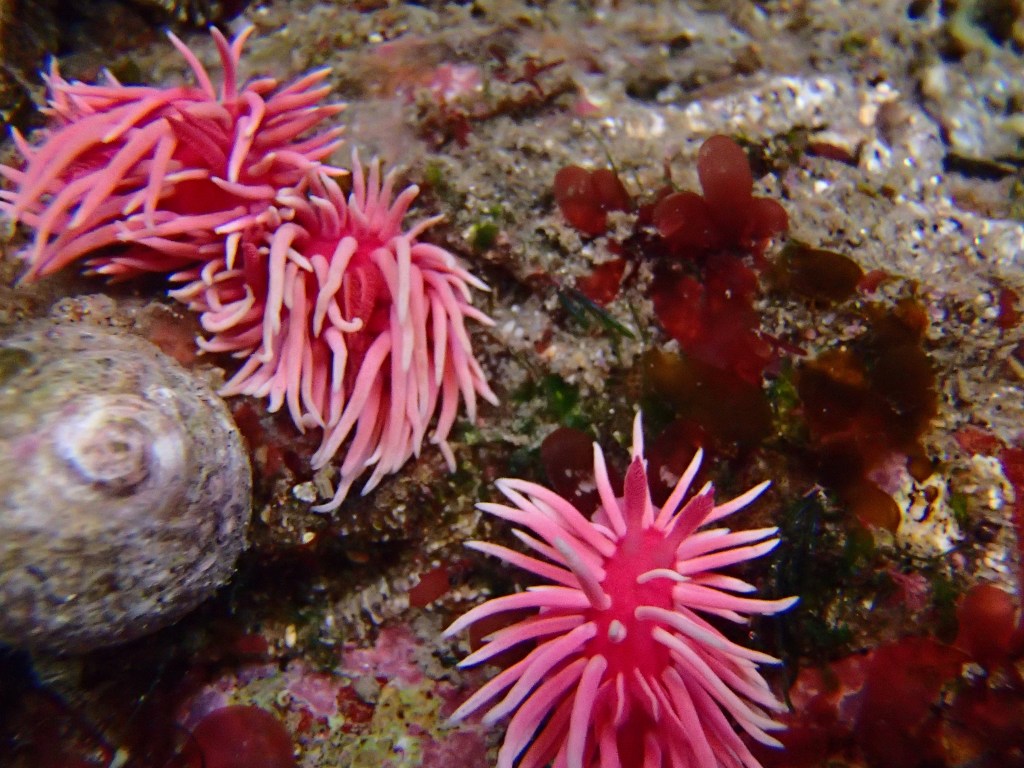
Most nudibranchs have very specific diets, which is one of the reasons you can’t keep them in aquariums. Many of these sea slugs only eat a certain kind of bryozoan, hydroid, or sponge. Because of this, one great way to find nudibranchs is to find their food source. There’s a good chance that the nudibranchs will be on or around what they eat.
Because there are so many species, the food sources of some slugs are unknown, so this only works for better known slugs. You can check out the sea slug forum for reliable information on many species.
For an example, the Hopkins rose nudibranch, a very common slug in the Southern California tide pools, feeds exclusively on an encrusting red bryozoan (Integripelta bilabiata). This is what gives them their pink color. The spots of pink on the rock just to the left of the lowest nudibranch in the picture above is red bryozoan, their food source.
4. Look at Dawn or Dusk
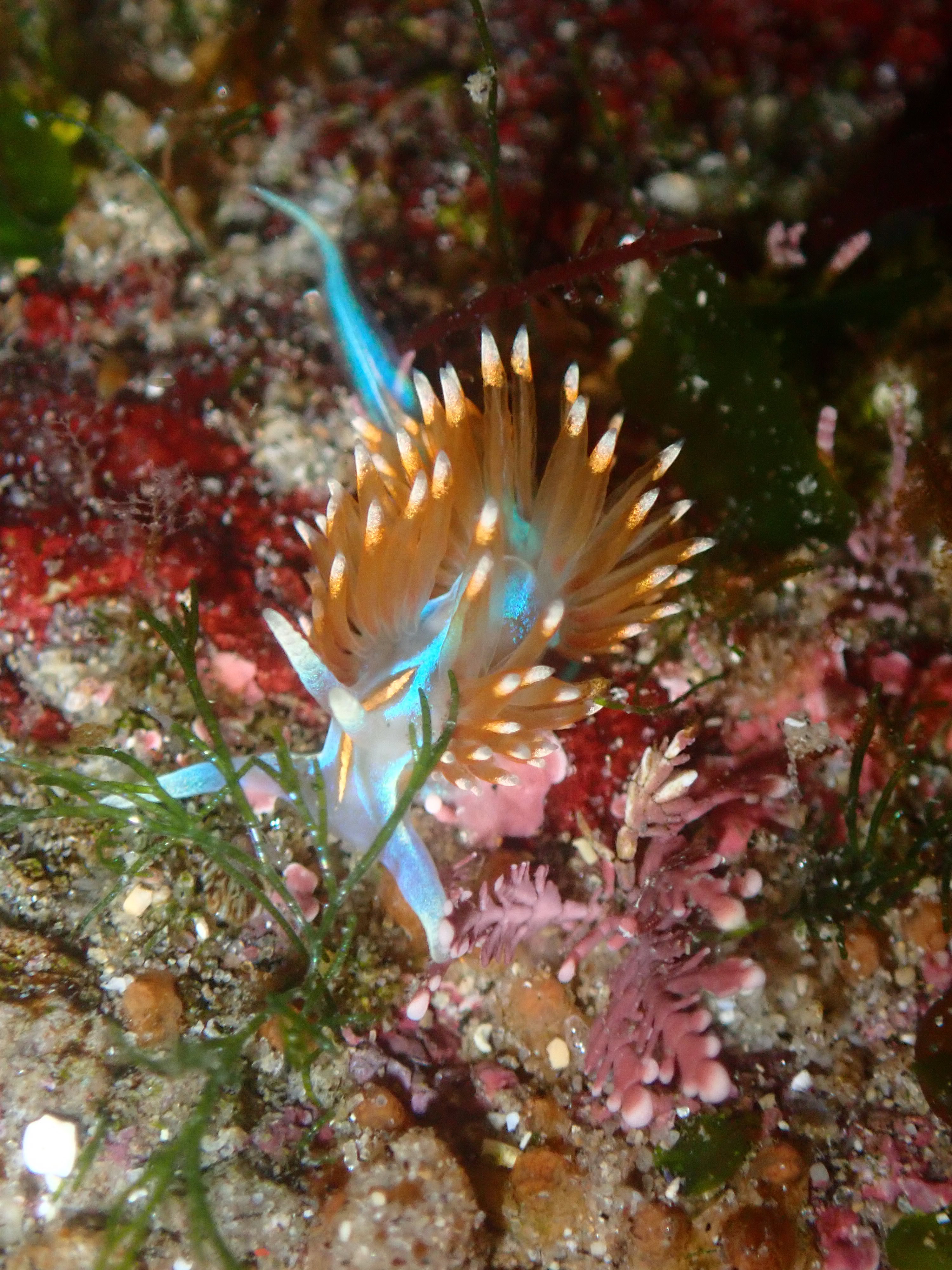
When you can go tide pooling depends on the tide, but if the low tide happens to be early in the morning or late in the evening, take the opportunity! Many nudibranchs are nocturnal, meaning they come out at night to feed. I have often been at the tide pools as night was approaching, not seeing any slugs and then finding dozens once the sun went down.
I’ve seen many more opalescent nudibranchs, like the one pictured above, at night than I have during the day. If you do go searching for nudibranchs at night, it’s a good idea to bring a flash light, headlamp, or dive light. Not only are these lights helpful for your own safety navigating the tide pools at night, but many nudibranchs are somewhat reflective, making them easier to find when illuminated with a light.
5. Be Patient
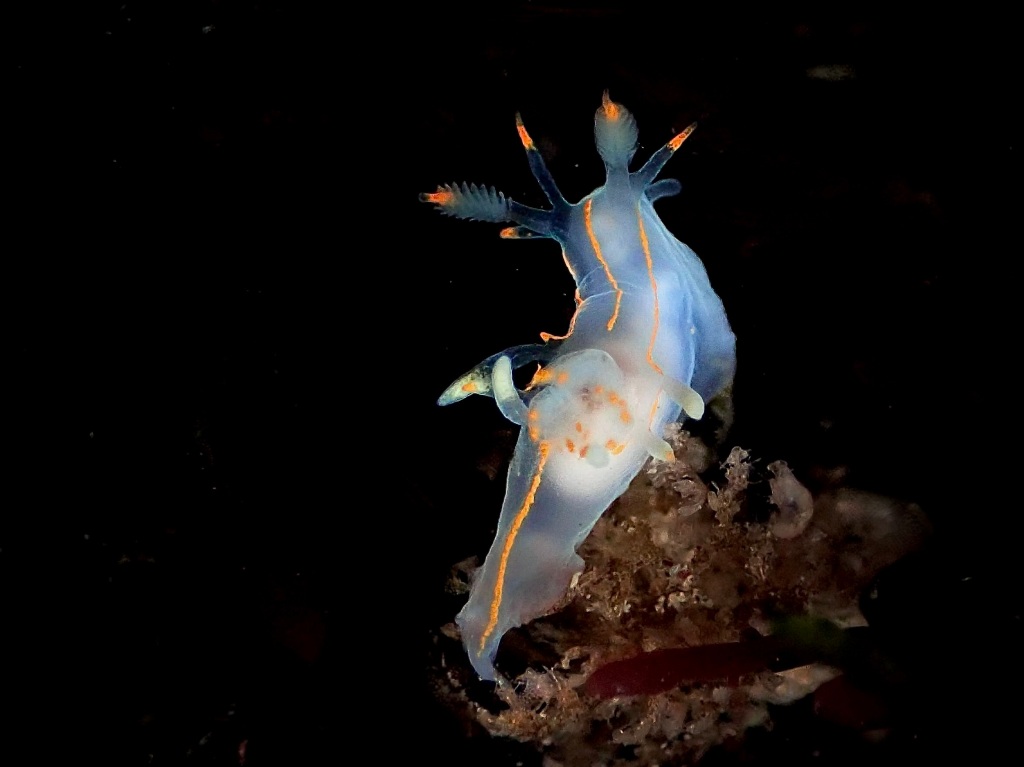
Perhaps the best piece of advice that I can give for finding nudibranchs is to be patient. Look long and hard into each pool. Look from different angles, underneath rock ledges, on the underside of sea grass and in the water beneath. You are not very likely to see an tiny nudibranch while causally glancing in the water before moving on.
The saying is true that the more you look, the more you see. Look closely at a more common creature that you see and you might find that your focused perspective shows you a nudibranch in the same pool. These creatures are fascinating and are worth the time it takes to find them in the wild, often the only place you will ever get to see one. Good luck and happy tide pooling!

Categories
tags
Subscribe to the blog
Sign up to receive weekly emails with tide pooling information and guides so you never miss a post!

Leave a comment